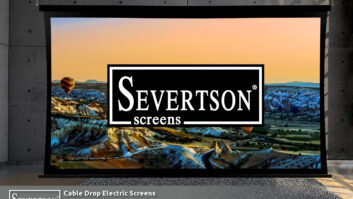A little more than two years ago I authored an editorial in TWICE in which I somewhat unfairly chastised the Consumer Electronics Association (as it is now known) for caving in on the V-Chip issue. CEA not only went with the popular flow on this issue, it helped develop the chip and the child-protecting ratings standard.
I think that maybe CEA would have fought the V-Chip if it didn’t have more important issues to deal with. At the same time, it was battling to get Congress and the Federal Communications Commission to adopt a digital TV broadcasting standard and was involved in the still ongoing effort to devise a digital video recording system acceptable to Hollywood copyright owners. The CEA view, I believe, was that fighting on all three fronts would have been counter-productive, and that accepting the V-Chip would help win allies on the two more critical matters.
Now, 19 months after the inclusion of V-Chips in all 13-inch-and-larger color TVs became mandatory, my two predictions on the aftermath have come to pass. First, the V-Chip has shifted responsibility for sex and violence restraint from the programmers to parents. According to a study of the 1999-2000 TV season by the Parents TV Council, the occurrence of violence rose 70 percent and the use of coarse language was up 78 percent during the 8 p.m. to 9 p.m. family viewing period. And although sex scenes were down 17 percent, those that were shown were much more explicit.
As to doubts about the effectiveness of the V-Chip itself, 53 percent of parents who own V-Chip equipped sets aren’t even aware of the feature, according to a recently released consumer survey conducted by the Kaiser Family Foundation. What’s more, only a third of those who do know about it, or 14 percent of set owners, have ever used it. And I’m willing to bet that 14 percent figure is exaggerated by nearly half.
Why isn’t it used? First of all it’s much too mechanically complex. My TV’s instruction manual has seven full pages of V-Chip programming instructions. And second, according to Kaiser, the system has so many variations that it confuses consumers.
Currently, a Senate committee is again studying the situation and the recommendations it’s receiving are as confusing as the V-Chip itself. Some want more detailed ratings. Others want simplified ratings and still others see a uniform ratings system covering all forms of entertainment as the solution. Of course, any such change would render useless the V-Chips in the estimated 25 million V-Chip-equipped sets now in consumers’ hands.
Sen. Joe Lieberman, a committee member, said the object of the hearings is “to empower parents,” to put limits on what their kids see and hear. Wasn’t that what the V-Chip was supposed to do?
Separately, I note here the closing of another window on the industry with the end to the filing of financial reports to the Securities and Exchange Commission by Zenith Electronics, the last of the domestic-only TV marketers required to file such reports. Although Zenith has been wholly owned by Korea’s LG Electronics since November 1999, outstanding publicly held debt issues have required it to continue financial disclosure.
But just prior to the end of this year’s second quarter, Zenith told the SEC that, since there are fewer than 300 holders of its debentures, it has exercised its right to discontinue filing reports.
Zenith’s final report, for the quarter to March 31, shows that it had cut its net loss for the period to $6.5 million from $22.3 million in the same 2000 period. The bottom line benefited from a virtual end to restructuring and severance expenses, a $2.1 million gain on the sale of its formerly in-house extended warranty business and a $3.3 million rise to $8.8 million in income from patent royalties.
By the end of the second quarter, Zenith’s report says, it will start phasing out “substantial portions of its analog consumer electronics business” to become primarily “a distributor of digital TVs to the consumer market.”
Bob Gerson, TWICE editor-at-large, has covered the CE industry for more than 30 years. He is the founding editor of the publication and its longtime editor-in-chief. In recognition of his work, Gerson was presented with one of the first Consumer Electronics Association Lifetime Achievement Awards at CES last year.












